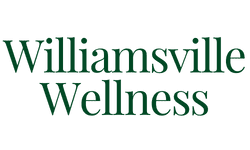The First 90 Days of Sobriety: Your Complete Recovery Roadmap
Navigate early recovery with confidence through proven strategies for lasting transformation
📚 What You'll Discover in This Guide
The first 90 days of recovery from alcohol addiction or drug addiction represent far more than an arbitrary milestone. This critical 90-day period marks a transformative journey where your brain begins its remarkable healing process, new neural pathways form, and the foundation for lasting recovery takes root.
The first three months of sobriety are often called the "danger zone" because this period brings the highest risk of relapse, the most intense physical and emotional challenges, and the greatest need for support. Yet it's also when the most profound changes begin to occur, setting the stage for sustained recovery.
Whether you're preparing to begin your recovery journey, supporting a loved one, or currently navigating early sobriety, understanding what happens during these crucial first 90 days can make the difference between temporary abstinence and lasting transformation. Research shows that individuals who receive comprehensive residential treatment during this critical period have significantly better long-term outcomes.
The 90-day milestone isn't just symbolic. According to research from the National Institute on Alcohol Abuse and Alcoholism, it takes approximately 90 days for the prefrontal cortex to begin regaining proper decision-making abilities after prolonged substance use. This same timeframe allows for significant neuroplastic changes that support recovery and the formation of new, healthier habits.

Journaling helps process emotions during early sobriety
Why 90 Days Matters: The Science Behind the Timeline
The 90-day recovery framework isn't arbitrary - it's rooted in neuroscience and decades of clinical observation. This specific timeframe aligns with critical biological and psychological processes that occur during early recovery.
The human brain possesses an remarkable ability called neuroplasticity - the capacity to reorganize itself by forming new neural connections. During active addiction, the brain's reward system becomes hijacked, with neural pathways reinforcing substance-seeking behavior. However, these same neuroplastic properties that enabled addiction can facilitate recovery.
Research indicates that it takes approximately 90 days for significant neuroplastic changes to occur. During this period, the brain begins to restore balance to neurotransmitter systems that were disrupted by substance use, particularly dopamine, serotonin, and GABA. The prefrontal cortex, responsible for decision-making, impulse control, and emotional regulation, starts to regain functionality.
Additionally, behavioral psychology research suggests that it takes between 21 to 90 days to form a new habit, depending on its complexity. The habits and routines you establish during these first 90 days become the foundation of your recovery lifestyle, making this period essential for creating sustainable change.
For individuals with co-occurring disorders, this 90-day period is even more critical, as both mental health conditions and addiction must be addressed simultaneously for optimal outcomes.
Days 1-30: Surviving the Storm
The first month of sobriety is typically the most challenging period of recovery. Your body and brain are adjusting to the absence of substances, withdrawal symptoms may still be present, and the psychological adjustment to life without substances can feel overwhelming.

Professional support is essential during the challenging first weeks
Physical Changes in Month One
During the first 30 days, your body undergoes significant detoxification. Many individuals experience:
Acute Withdrawal Resolution
Physical withdrawal symptoms typically peak within the first week and gradually subside over 2-3 weeks, though some may linger longer depending on the substance.
Sleep Disruption
Sleep patterns are often severely disrupted, with insomnia, vivid dreams, or hypersomnia common as your brain chemistry rebalances.
Energy Fluctuations
Energy levels may swing wildly between exhaustion and restlessness as your body adjusts to producing energy without chemical assistance.
Appetite Changes
Your appetite may be suppressed or increased dramatically as your body's natural hunger signals return and nutritional deficiencies begin to resolve.
Emotional Challenges
The emotional landscape of early recovery can be intense and unpredictable. Many people describe feeling emotionally raw, as substances are no longer available to numb or regulate feelings. Common emotional experiences include:
Anxiety and depression are particularly prevalent during this period. Without substances to self-medicate, underlying mental health conditions become more apparent, highlighting the importance of integrated treatment that addresses both addiction and mental health simultaneously.
💡 Critical Insight
The first 30 days have the highest relapse risk. Having professional support through structured treatment programs significantly improves your chances of making it through this vulnerable period.
Essential Strategies for Days 1-30
Focus on basic survival and establishing fundamental routines. This is not the time for major life changes beyond getting sober. Key priorities include:
Attending daily support meetings - the "90 meetings in 90 days" recommendation exists because daily accountability and connection are crucial during this vulnerable period. Maintaining consistent sleep and wake times helps regulate your disrupted circadian rhythms. Eating nutritious meals at regular times supports brain healing and physical recovery. Staying connected with your treatment team and support network prevents isolation.
If you're struggling with opioid addiction, medication-assisted treatment may be an essential component of your early recovery plan, helping to manage cravings and withdrawal symptoms.
Days 31-60: Building Momentum
The second month of sobriety often brings noticeable improvements in physical and mental health, though challenges certainly remain. This period is characterized by emerging stability and the development of new coping mechanisms.

Physical activity and nature connection support recovery during the second month
Physical Improvements Accelerate
By the second month, most acute withdrawal symptoms have resolved, and you may notice significant physical improvements. Sleep quality typically improves substantially, with fewer disruptions and more restorative rest. Energy levels become more stable and predictable, allowing for increased activity and engagement.
Your physical appearance may begin to change noticeably. Skin often looks healthier and more vibrant as hydration improves and toxins are eliminated. Eyes become clearer and brighter. If weight loss or gain occurred during active addiction, your body begins to return to a healthier baseline.
Cognitive function starts to sharpen during this period. Memory, concentration, and problem-solving abilities improve as brain fog lifts. This cognitive improvement makes it easier to engage meaningfully in therapy and learn new coping skills.
Emotional Regulation Develops
The emotional volatility of the first month begins to stabilize during days 31-60. While emotions may still feel intense, you're developing better tools to manage them. Through therapy and support groups, you're learning to:
Identify and name emotions accurately, understanding the difference between feeling anxious versus angry, sad versus lonely. Tolerate uncomfortable feelings without immediately seeking to escape them. Use healthy coping strategies like exercise, meditation, journaling, or talking to supportive people when emotions feel overwhelming.
New Challenges Emerge
While physical symptoms improve, new psychological challenges often emerge during the second month. The initial euphoria or relief of early sobriety may fade, replaced by a more realistic assessment of the work ahead. This is sometimes called the "pink cloud" dissipating.
You may become more aware of the damage caused during active addiction - strained relationships, financial problems, legal issues, or health consequences. This awareness can trigger guilt, shame, or grief that requires processing with professional support.
Boredom and restlessness are common during this period. As physical recovery progresses, you have more energy but may not yet have established fulfilling activities and connections to replace substance use. This is an excellent time to explore new hobbies, reconnect with old interests, and build a recovery-oriented lifestyle.
Key Strategies for Days 31-60
Continue attending support meetings and therapy sessions consistently. Many people make the mistake of reducing support during this period because they're feeling better, only to struggle later. Maintain your recovery commitment.
Begin establishing new routines and activities. Explore exercise, creative pursuits, volunteer work, or educational opportunities. Start making amends where appropriate, but with guidance from your sponsor or therapist to ensure you're ready.
For individuals with gambling addiction, this period often involves establishing financial accountability systems and developing healthy stress management alternatives.
Days 61-90: Establishing Your Foundation
The final month of your first 90 days is where the pieces begin to come together. The habits you've been building become more automatic, your physical and mental health continue to improve, and you gain confidence in your ability to maintain sobriety.

Support groups provide essential connection and accountability through the 90-day milestone
Reaching the 90-Day Milestone
Achieving 90 days of continuous sobriety is a significant accomplishment that deserves recognition and celebration. Statistics show that individuals who reach this milestone have substantially better long-term recovery outcomes. According to research, after maintaining sobriety for 90 days, the risk of relapse begins to decrease significantly, though it never disappears entirely.
By day 90, most people report feeling dramatically different than they did in early recovery. Sleep has typically normalized, energy is stable, and the constant preoccupation with substances has diminished. You've weathered numerous triggers and challenging situations without using, building confidence in your coping abilities.
Brain Function Restoration
The neurological changes that occur during these 90 days are profound. Brain imaging studies show that after approximately three months of abstinence, significant improvements occur in brain structure and function. Gray matter volume, which often decreases during active addiction, begins to increase. The prefrontal cortex shows improved activity and connectivity.
Neurotransmitter systems are rebalancing. Dopamine receptors, which become downregulated during addiction, start to return to more normal levels. This means you can begin experiencing pleasure and reward from everyday activities without substances.
Establishing Sustainable Routines
By the end of 90 days, your recovery routine should feel more natural and less effortful. The daily practices that seemed difficult initially - attending meetings, exercising, journaling, meditation - have become integrated into your lifestyle.
This is an excellent time to evaluate which practices are most beneficial and adjust your routine accordingly. What worked in early recovery may need refinement as you progress. Continue what's working, let go of what isn't, and remain open to trying new approaches.
✨ Milestone Achievement
Reaching 90 days demonstrates that sustained recovery is possible and that you have the tools, support, and commitment to maintain sobriety long-term.
The Neuroscience of Recovery: How Your Brain Heals
Understanding the neurological changes occurring during your first 90 days can provide motivation and hope during challenging moments. Addiction fundamentally changes brain structure and function, but recovery allows the brain to heal in remarkable ways.
During active addiction, substances hijack the brain's reward system. The nucleus accumbens, ventral tegmental area, and prefrontal cortex undergo changes that prioritize substance-seeking behavior above all else. Neural pathways associated with drug use become strengthened through repetition, while pathways for other rewards weaken.
The good news is that the same neuroplasticity that enabled these harmful changes can facilitate recovery. When substance use stops, the brain begins to rebalance. This process occurs in stages:
Week 1-2: Acute withdrawal as the brain adjusts to the absence of substances. Neurotransmitter systems are severely dysregulated, causing intense cravings and emotional disturbance.
Weeks 3-4: Post-acute withdrawal symptoms may emerge or continue. The brain is still rebalancing, but acute symptoms are subsiding.
Days 30-60: Significant improvements in dopamine function occur. The reward system becomes more responsive to natural rewards. Cognitive function improves noticeably.
Days 60-90: Prefrontal cortex function continues to improve, enhancing decision-making, impulse control, and emotional regulation. Gray matter volume increases. Neural pathways associated with substance use begin to weaken while pathways for healthy behaviors strengthen.
Research published in the National Institute on Alcohol Abuse and Alcoholism's Core Resource confirms that months of abstinence can improve and possibly reverse many addiction-induced brain changes, though some alterations may persist long-term.
Understanding Relapse Risk: Statistics and Prevention
Relapse is a common part of many recovery journeys, but understanding risk factors and prevention strategies significantly improves your chances of sustained sobriety.
Statistics show that substance use disorders have relapse rates of 40-60%, similar to other chronic conditions like hypertension and asthma. However, these numbers shouldn't be discouraging - they simply reflect the chronic nature of addiction and the importance of ongoing management.
The first 90 days present the highest relapse risk, with approximately 75% of relapses occurring during this critical period. However, the risk decreases dramatically over time. After one year of sobriety, relapse rates drop to around 50%, and after five years of continuous recovery, the risk falls to approximately 15%.
Common Relapse Triggers
Understanding your personal triggers is essential for relapse prevention. Common triggers include:
Stress: Approximately 65% of individuals in recovery report stress as a primary relapse trigger. Learning healthy stress management through ongoing therapy is crucial.
Negative emotions: Anger, sadness, loneliness, and anxiety can trigger intense cravings if you haven't developed healthy coping mechanisms.
Environmental cues: People, places, and things associated with substance use can trigger powerful cravings through classical conditioning.
Positive emotions: Celebration or success can also trigger relapse, as substances may have been used during positive experiences in the past.
Overconfidence: Becoming complacent in recovery efforts or believing you've "beaten" addiction can lead to decreased vigilance and increased risk.
Relapse Prevention Strategies
Effective relapse prevention involves recognizing warning signs early and having concrete plans to address them. The three stages of relapse - emotional, mental, and physical - can be interrupted at any point:
Emotional relapse: Poor self-care, isolation, suppressing emotions, not attending meetings. Intervene by increasing self-care and support.
Mental relapse: Thinking about people/places/things associated with use, glamorizing past use, planning relapse. Intervene by talking to support network and therapist immediately.
Physical relapse: Using substances. Intervene by seeking immediate help and viewing this as a learning opportunity rather than failure.
Building Your Support Network
Recovery cannot be sustained in isolation. Building a robust support network is one of the most important tasks of your first 90 days.

A strong support network is essential for sustained recovery success
Professional Support
Your professional support team should include addiction counselors, therapists, and potentially medical providers. Regular therapy sessions provide a safe space to process emotions, develop coping skills, and address underlying issues contributing to addiction.
For individuals with co-occurring mental health conditions, working with professionals who understand dual diagnosis treatment is essential for addressing both conditions simultaneously.
Peer Support
Connecting with others in recovery provides unique benefits that professional support cannot. Fellow recovering individuals understand your experience in ways that others may not, offering empathy, practical advice, and hope.
The "90 meetings in 90 days" recommendation exists because daily connection with others in recovery provides crucial accountability and support during the vulnerable early period. Whether through 12-step programs, SMART Recovery, or other support groups, regular attendance helps maintain focus and motivation.
Family and Friends
Rebuilding relationships damaged during active addiction takes time, but family involvement can significantly improve recovery outcomes. Family therapy helps loved ones understand addiction as a disease, develop healthy boundaries, and learn how to support recovery without enabling.
Not everyone from your past will support your recovery. Some relationships may need to end, particularly those centered around substance use. This loss is normal and necessary for sustained recovery.
Creating Sober Social Networks
Developing new friendships and social activities that don't involve substances is essential. This might include:
Joining recovery-focused social groups or activities, pursuing hobbies and interests you may have abandoned during addiction, volunteering for causes you care about, attending community events and classes, or connecting with others who share your values and interests.
Physical and Mental Transformations
The physical and mental health improvements during your first 90 days can be dramatic and provide powerful motivation to maintain sobriety.
Physical Health Improvements
By 90 days, you may notice significant physical changes:
Sleep quality: After weeks or months of disrupted sleep, your circadian rhythm normalizes, allowing for deeper, more restorative rest.
Energy and vitality: As your body heals from the toxic effects of substances, natural energy returns. Many people report feeling more alive and vibrant than they have in years.
Appearance improvements: Skin becomes clearer and more radiant, eyes brighten, and overall appearance improves as hydration normalizes and nutrition improves.
Weight stabilization: Your body returns to a healthier weight as appetite and metabolism regulate.
Organ function: The liver, kidneys, and other organs begin healing from the damage caused by substance use. Blood pressure and heart rate normalize.
Mental Health Benefits
The mental health improvements during early recovery are equally significant:
Cognitive function: Memory, concentration, and problem-solving abilities improve dramatically as brain fog lifts.
Emotional stability: While early recovery is emotionally intense, by 90 days most people experience greater emotional balance and resilience.
Reduced anxiety and depression: Substance use often worsens mental health conditions. As your brain chemistry rebalances and you develop healthy coping skills, symptoms often improve significantly.
Increased self-esteem: Achieving sobriety milestones and rebuilding your life generates legitimate pride and confidence.
Mental clarity: The fog of addiction lifts, allowing for clearer thinking and better decision-making.
Essential Daily Practices for the First 90 Days
Certain daily practices significantly increase your chances of successfully navigating the first 90 days and establishing a foundation for long-term recovery.
Morning Routine
How you start your day sets the tone for the hours ahead. An intentional morning routine might include:
Meditation or prayer to center yourself and set positive intentions. Reading recovery literature or inspirational material to reinforce your commitment. Exercise or movement to boost endorphins and energy. Healthy breakfast to fuel your body and brain. Reviewing your daily schedule and identifying potential challenges or triggers.
Ongoing Recovery Activities
Throughout the day, maintain your recovery focus through:
Attending support group meetings, checking in with your sponsor or accountability partner, practicing mindfulness and staying present in the moment, using coping skills when cravings or difficult emotions arise, and maintaining boundaries with people, places, and situations that threaten your sobriety.
Evening Reflection
End each day with reflection and gratitude:
Journaling about your experiences, emotions, and insights, reviewing what went well and what you can improve, expressing gratitude for specific aspects of your recovery and life, planning for the next day, and ensuring adequate sleep by maintaining consistent sleep hygiene.
Physical Self-Care
Your body is healing from the effects of addiction and needs proper care:
Eating nutritious, regular meals to support brain healing and overall health. Staying well-hydrated with water throughout the day. Getting regular exercise, even if just a daily walk. Maintaining proper sleep hygiene and getting adequate rest. Attending medical appointments and following health provider recommendations.
Emotional Self-Care
Managing emotions without substances requires developing new skills:
Talking about feelings with trusted people rather than suppressing them. Using healthy coping mechanisms like exercise, art, music, or nature when emotions feel overwhelming. Setting and maintaining boundaries to protect your recovery. Practicing self-compassion when you make mistakes or face challenges. Celebrating successes, no matter how small.
Looking Beyond 90 Days: Maintaining Long-Term Recovery
Reaching 90 days is a significant milestone, but it's important to recognize that recovery is a lifelong journey, not a destination. The foundation you've built during these first three months sets the stage for continued growth and healing.
The Journey Continues
After 90 days, your recovery work continues but often feels less all-consuming. As your brain continues healing and healthy habits become more automatic, maintaining sobriety typically requires less constant effort. However, ongoing vigilance and engagement in recovery activities remain important.
Many people find that their recovery focus shifts from basic survival to building a meaningful, fulfilling life. The question evolves from "How do I stay sober today?" to "How do I create a life I love without substances?"
Continued Growth
Recovery offers opportunities for personal growth that extend far beyond abstinence:
Healing relationships and building new healthy connections. Pursuing education, career goals, or creative interests you may have abandoned. Developing spiritual or philosophical practices that provide meaning and purpose. Contributing to others through sponsorship, volunteering, or advocacy work. Addressing underlying trauma and emotional wounds that contributed to addiction.
Ongoing Support
While the intensity of support needed may decrease after 90 days, maintaining connection with your recovery network remains crucial. Continue attending meetings, therapy sessions, and other support activities. Consider reducing frequency if appropriate, but maintain consistent engagement.
Many people find that giving back through helping others in early recovery provides purpose and reinforces their own commitment to sobriety.
The first 90 days teach you that recovery is possible. The months and years that follow allow you to discover who you are beyond addiction and build a life that makes staying sober the obvious choice.
Remember that seeking help is a sign of strength, not weakness. Whether you're just beginning your recovery journey or supporting someone who is, professional treatment provides the structure, support, and tools necessary for navigating these critical first 90 days successfully.
Ready to Start Your Recovery Journey?
The first 90 days of recovery are challenging, but you don't have to face them alone. Our experienced addiction treatment team provides comprehensive, evidence-based care designed to support you through early recovery and beyond. We understand the unique challenges of the first three months and create personalized treatment plans that address both addiction and any co-occurring mental health conditions.
Our residential treatment programs provide the intensive support needed during this critical period, while our outpatient services offer continued care as you progress through your recovery journey. We work with you to build the foundation for lasting transformation.
Take the first step toward lasting recovery - your future self will thank you for making this courageous decision today.
📞 Call 804-655-0094Speak with a compassionate addiction specialist and learn how our treatment programs can support your recovery journey through the critical first 90 days and beyond.

